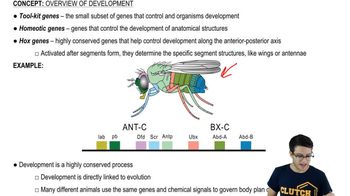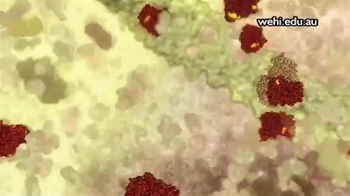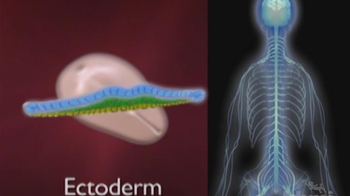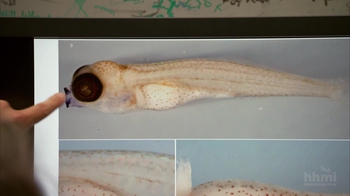Table of contents
- 1. Introduction to Biology2h 40m
- 2. Chemistry3h 40m
- 3. Water1h 26m
- 4. Biomolecules2h 23m
- 5. Cell Components2h 26m
- 6. The Membrane2h 31m
- 7. Energy and Metabolism2h 0m
- 8. Respiration2h 40m
- 9. Photosynthesis2h 49m
- 10. Cell Signaling59m
- 11. Cell Division2h 47m
- 12. Meiosis2h 0m
- 13. Mendelian Genetics4h 41m
- Introduction to Mendel's Experiments7m
- Genotype vs. Phenotype17m
- Punnett Squares13m
- Mendel's Experiments26m
- Mendel's Laws18m
- Monohybrid Crosses16m
- Test Crosses14m
- Dihybrid Crosses20m
- Punnett Square Probability26m
- Incomplete Dominance vs. Codominance20m
- Epistasis7m
- Non-Mendelian Genetics12m
- Pedigrees6m
- Autosomal Inheritance21m
- Sex-Linked Inheritance43m
- X-Inactivation9m
- 14. DNA Synthesis2h 27m
- 15. Gene Expression3h 20m
- 16. Regulation of Expression3h 31m
- Introduction to Regulation of Gene Expression13m
- Prokaryotic Gene Regulation via Operons27m
- The Lac Operon21m
- Glucose's Impact on Lac Operon25m
- The Trp Operon20m
- Review of the Lac Operon & Trp Operon11m
- Introduction to Eukaryotic Gene Regulation9m
- Eukaryotic Chromatin Modifications16m
- Eukaryotic Transcriptional Control22m
- Eukaryotic Post-Transcriptional Regulation28m
- Eukaryotic Post-Translational Regulation13m
- 17. Viruses37m
- 18. Biotechnology2h 58m
- 19. Genomics17m
- 20. Development1h 5m
- 21. Evolution3h 1m
- 22. Evolution of Populations3h 52m
- 23. Speciation1h 37m
- 24. History of Life on Earth2h 6m
- 25. Phylogeny2h 31m
- 26. Prokaryotes4h 59m
- 27. Protists1h 12m
- 28. Plants1h 22m
- 29. Fungi36m
- 30. Overview of Animals34m
- 31. Invertebrates1h 2m
- 32. Vertebrates50m
- 33. Plant Anatomy1h 3m
- 34. Vascular Plant Transport2m
- 35. Soil37m
- 36. Plant Reproduction47m
- 37. Plant Sensation and Response1h 9m
- 38. Animal Form and Function1h 19m
- 39. Digestive System10m
- 40. Circulatory System1h 57m
- 41. Immune System1h 12m
- 42. Osmoregulation and Excretion50m
- 43. Endocrine System4m
- 44. Animal Reproduction2m
- 45. Nervous System55m
- 46. Sensory Systems46m
- 47. Muscle Systems23m
- 48. Ecology3h 11m
- Introduction to Ecology20m
- Biogeography14m
- Earth's Climate Patterns50m
- Introduction to Terrestrial Biomes10m
- Terrestrial Biomes: Near Equator13m
- Terrestrial Biomes: Temperate Regions10m
- Terrestrial Biomes: Northern Regions15m
- Introduction to Aquatic Biomes27m
- Freshwater Aquatic Biomes14m
- Marine Aquatic Biomes13m
- 49. Animal Behavior28m
- 50. Population Ecology3h 41m
- Introduction to Population Ecology28m
- Population Sampling Methods23m
- Life History12m
- Population Demography17m
- Factors Limiting Population Growth14m
- Introduction to Population Growth Models22m
- Linear Population Growth6m
- Exponential Population Growth29m
- Logistic Population Growth32m
- r/K Selection10m
- The Human Population22m
- 51. Community Ecology2h 46m
- Introduction to Community Ecology2m
- Introduction to Community Interactions9m
- Community Interactions: Competition (-/-)38m
- Community Interactions: Exploitation (+/-)23m
- Community Interactions: Mutualism (+/+) & Commensalism (+/0)9m
- Community Structure35m
- Community Dynamics26m
- Geographic Impact on Communities21m
- 52. Ecosystems2h 36m
- 53. Conservation Biology24m
20. Development
Developmental Biology
Problem 12
Textbook Question
Textbook QuestionType I diabetes is a form of diabetes that is due to the loss of insulin-producing cells of the pancreas. The potential of stem cells—in particular, induced pluripotent stem (iPS) cells—for therapy has gotten a lot of press. If researchers were attempting to stimulate the differentiation of iPS cells, which of the following would they most likely add to the cell-culture medium (the liquid surrounding the cells)? a. activin A, an extracellular signal protein b. Sox-2, a transcription factor active in early development c. Grb-2, an intracellular signal transduction protein d. lactase, an enzyme that catalyzes the breakdown of lactose
 Verified step by step guidance
Verified step by step guidance1
First, understand that the goal is to stimulate the differentiation of induced pluripotent stem (iPS) cells into insulin-producing cells. Differentiation involves the process where stem cells develop into more specialized cells.
Next, consider the role of each option in cellular processes. Activin A is known as an extracellular signal protein that can influence cell growth and differentiation by binding to its receptors on the cell surface.
Sox-2, while important in maintaining pluripotency in stem cells, is a transcription factor that functions inside the cell and is not typically added to culture media to induce differentiation.
Grb-2 is an intracellular adaptor protein involved in signal transduction pathways and is not used externally in cell culture media for differentiation purposes.
Lactase is an enzyme that breaks down lactose and is unrelated to the process of cell differentiation. It would not be used in this context.
Conclude that the most likely substance to be added to the cell-culture medium to stimulate the differentiation of iPS cells into insulin-producing cells is activin A, due to its role as an extracellular signal protein that can promote differentiation.
Recommended similar problem, with video answer:
Verified Solution
Video duration:
1mPlay a video:
Related Videos
Related Practice


























![Drosophila Embryogenesis - Anterior/Posterior Patterning [English Captions]](https://img.youtube.com/vi/ZOzKXrOGtgw/mqdefault.jpg)



















